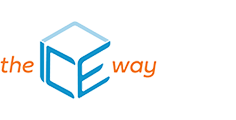Transition to data storage in the cloud has been a focal point for many companies across all industries within the last few years. As physical hardware for data storage has started reaching end of life many organisations have seen transferring data to a cloud workflow as a natural progression. However, within the cruise industry this changeover has had its challenges.
In the past, unreliable connectivity experienced on ships has hindered the sector’s ability to maximise the potential of cloud technologies. This has resulted in increased reliance upon on-premise data centres which use a large area on board the vessel.
In the next 2-3 years we are due to see the launch of mega constellations of Low Earth Orbit (LEO) satellites. LEO satellites promise to deliver low latency connectivity which, when combined with other modes of terrestrial communication will allow the industry to maximise its use of cloud technologies and adopt the cloud reliably. With dependable connectivity to the cloud, the industry will no longer have to make allowances for the dropping out of services. This will reduce the necessity of having infrastructure on board and allow cruise companies to maximise space for other uses.
On-board reliance on technologies for orientation, maintenance and communication is ever-increasing. Due to the rising dependence on technology it is imperative that vessels have a Disaster Recovery strategy to ensure that data is available in the event of an emergency. Ensuring that the data is stored away from the vessel safeguards its ability to access the data in an urgent situation. Improved connectivity promised by LEO satellites will transform the reliability of accessing remote data and promote safety on-board if an emergency were to happen.
It’s important to understand what expectations and requirements the company has for its use of cloud services to ensure appropriate specification. Public Clouds can be practical for many businesses’ needs however more and more are turning to Private Cloud setups, usually due to security concerns and requirements.
Due to limited space on floating vessels, removing on premise infrastructure is a huge benefit of storing data in the cloud as it releases this space to be used commercially. However, in some instances, organisations may choose to keep a small portion of its data storage infrastructure on board. In this case it is possible to create a hybrid setup to enable integration between items kept on-premise and in the cloud. It’s not just about storage space however, the real benefits of the cloud are in utilising “cloud-power” and “cloud-versatility”. One such use-case is allowing companies to gain near real time insight from masses of IoT data on-board through the AI services available in the cloud. Cases such as this will help cruise lines improve operational efficiency and reduce the environmental footprint of vessels.
What’s clear from the latest advances in connectivity is that the cruise industry will have new tools to ensure constant access to their stored data, regardless of location. Due to the increased connectivity LEO satellites promise to deliver, businesses should take action to maximise the benefits of better connectivity to the cloud.
TheICEway’s Managed Cloud Solutions improves how you manage and store your data. Arrange a consultation with TheICEway experts to explore a tailored data storage solution for your organisation.











Leave a Comment